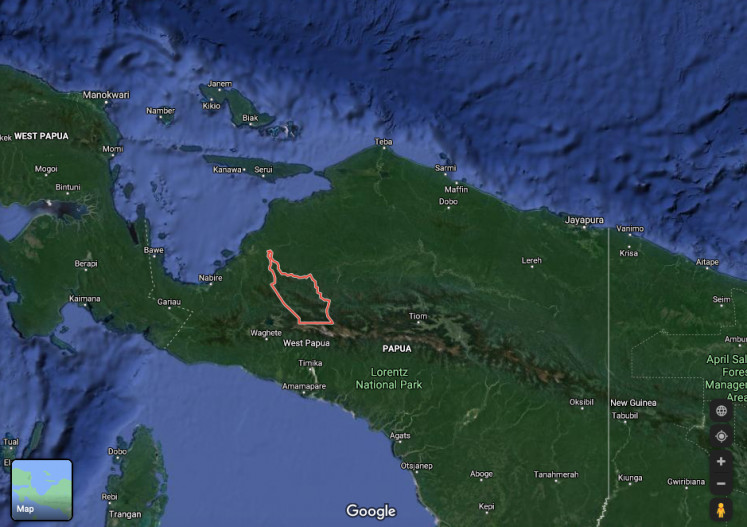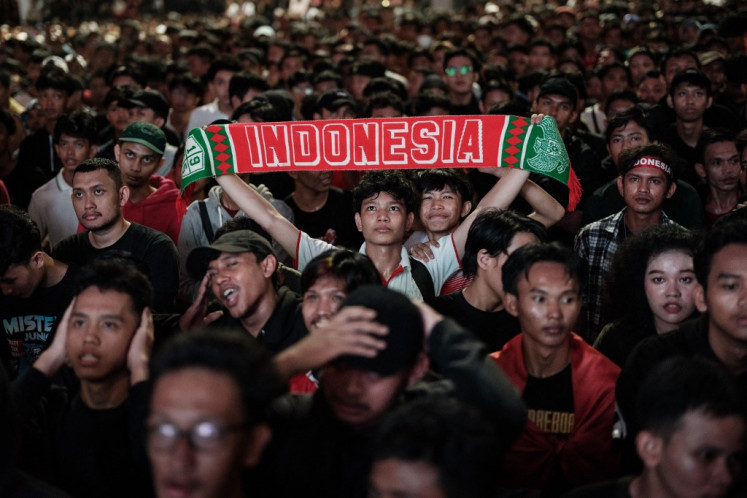RI palm oil exports to India losing out to Malaysia
Indonesia’s palm oil export volume has increased in the past two years, but exports to its biggest market, India, have been decreasing as it loses out to competition from Malaysia
Change text size
Gift Premium Articles
to Anyone

I
ndonesia’s palm oil export volume has increased in the past two years, but exports to its biggest market, India, have been decreasing as it loses out to competition from Malaysia.
Indonesian Oil Palm Association (GAPKI) chairman Joko Supriyono said Indonesia needed to protect its market in India as it imported 20 percent of Indonesia’s palm oil.
Indonesia is losing out to Malaysia because Malaysia enjoys lower tariffs.
“As the issue is to do with tariffs, the industry cannot do anything. The government has to wake up and do something both for the short- and long-term. India is an important market and we have to protect our interests there,” Joko told The Jakarta Post on Sunday.
According to GAPKI data, Indonesia’s palm oil export volume increased slightly to 32 million tons in 2018 from 31 million tons in 2017, while palm oil exports to India fell 13 percent to 6.7 million tons in 2018 from 7.6 million tons in 2017.
GAPKI data also shows palm oil exports to India were down 12 percent in the first five months of this year to 1.8 million tons from 2 million tons in the same period last year, while total palm oil exports in the same period increased to 13.1 million tons from 11.9 million tons.
The crux of the problem is the punitive tariffs imposed by India. India has gradually increased tariffs on Indonesia’s crude palm oil from 2.5 percent in 2013 to 44 percent now and refined palm oil from 7.5 percent in 2013 to 54 percent now.
The tariffs on Indonesian palm oil are much higher than those imposed on Malaysia, which enjoys a 40 percent tariff on crude palm oil and 45 percent for refined palm oil. Tariffs were lower because Malaysia has a free trade agreement (FTA) with India, while Indonesia does not.
“In the longer term, we have to have our own FTA with India and we have to do it bilaterally. Doing it through ASEAN is not enough,” Joko said.
“In the short-term, we have to get tariff cuts. Otherwise, our exports to India will continue to fall. In trade, it’s give and take. We cannot just demand tariff cuts without offering anything to India,” he added.
India has demanded market access for sugar, which Indonesia had agreed to. But sources said some interest groups in Indonesia have prevented Indian sugar from entering Indonesia.
A similar misstep happened with Turkey. Back in 2012, Indonesia’s palm oil exports to the country reached 600,000 tons when the two began their preferential trade agreement (PTA) negotiations. The talks, however, have gone nowhere because of the failure to reach an agreement on wheat. Turkey wanted to sell more wheat to Indonesia, but reportedly because of lobbying by the country’s biggest wheat importer, Indonesia refused to concede.
Malaysia, however, clinched an FTA — more comprehensive than a PTA — with Turkey. As a result, there is now a 10 percent price difference between Indonesian and Malaysian palm oil exports to Turkey. Indonesia’s exports to Turkey slumped to around 40,000 tons last year.
Indonesia’s palm oil exports to Pakistan, meanwhile, had experienced a surge in the 2000s and reached a peak of 740,000 tons in 2007, when Pakistan and Indonesia were negotiating a PTA to reduce the former’s deficit. The stumbling block at the time was Pakistan’s Kinnow oranges.
The then-director general of Indonesia’s Agriculture Ministry was adamant that it should not allow Kinnow to enter the market because Indonesia had a lot of orange products. Pakistan then cut its palm oil imports from Indonesia and shifted to Malaysia.
As a result, Indonesian palm oil exports to Pakistan dropped to 560,000 tons in 2008, 220,000 tons in 2009 and a low of 87,000 tons in 2010 before rebounding to 220,000 in 2011 when Indonesia agreed to allow Kinnow to enter the country for two months a year. Last year, Pakistan was Indonesia’s fifth largest palm oil export destination at over 2.48 million tons.









